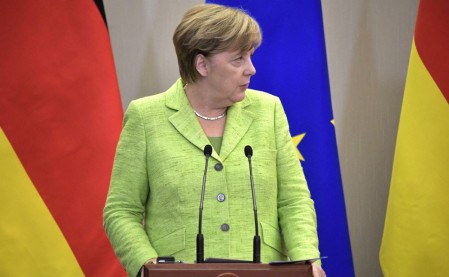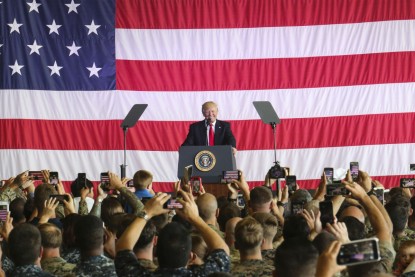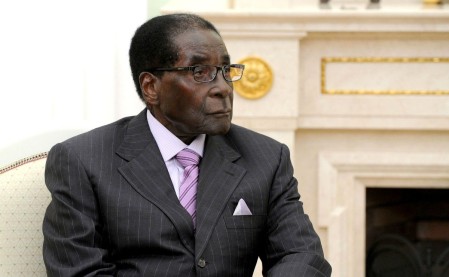 Can Angela Merkel see a new dimension in German politics? Photographer: Armin Kübelbeck, CC-BY-SA, Wikimedia Commons
Can Angela Merkel see a new dimension in German politics? Photographer: Armin Kübelbeck, CC-BY-SA, Wikimedia Commons
The collapse of talks to form a coalition government in Germany has left an unsettling sense of uncertainty in Europe’s biggest democracy. In a country where stability is valued above all else, no-one is sure what comes next.
The election in September produced a fragmented result. The radical-right AfD made big gains and the two major parties, Angela Merkel’s Christian-democratic CDU/CSU and the social-democratic SPD suffered significant losses. With the SPD insisting it would not return to government alongside the CDU, the latter sought an untried coalition with the liberal FDP and the Greens. This so-called “Jamaica coalition” (from the colours of the parties) proved too much of a stretch for the FDP.
Unless the parties reconsider their positions, the only other options are an early election or a minority government. Merkel says she prefers a new election because a minority administration might not be stable. Yet such governments are common in Europe, especially in proportional democracies like Denmark and Sweden, but even currently in Britain. The fact that minority governments can often survive for entire electoral cycles suggests there must be structural factors at work that increase their stability.
The median legislator
The most important is the support of the so-called median legislator. Imagine that all members of a parliament were arranged in order from the most left wing to the most right wing. In a parliament of 101 MPs, the median legislator – the “middle” MP – would be number 51: they would have 50 MPs to their left and 50 to their right. The median legislator’s support would be needed to pass any bills, because they are the MP who would give left or right a majority. That puts the median MP in a strong position.
If we assume for simplicity that all MPs in a given party adopt the same position, we can arrange the parties left to right and see which contains the median legislator. That party will have the greatest bargaining power – which explains the stability of so many minority and coalition governments.
To apply this idea to Germany, we need information on the parties’ general ideological positions. The Chapel Hill Expert Survey of 2014 gives the average estimates for each party by a group of academic specialists on German politics. On a 0 (extreme left) to 10 (extreme right) scale, the Left Party’s average position was 1.2, the Greens were at 3.6, the SPD at 3.8, the CDU at 5.9, the FDP at 6.5, the CDU’s Bavarian allies, the CSU at 7.2 and the AfD at 8.9. As there are 709 MPs in the German parliament, the median is number 355. Counting in from the right, AfD has 94 seats, the CSU 46, the FDP 80 and then the CDU, which has 200 and controls the median legislator.
The CDU, then, is in a pivotal position. That would make a minority or coalition government containing the CDU more stable than any other offering. Majorities would have to be constructed for each parliamentary vote, but if parties vote on a left-right basis, the CDU’s proposals could not be defeated by those put forward by more right-wing or left-wing parties. For example, a rival alliance among the three left-leaning parties would still need the CDU’s support to pass any legislation.
The German constitution also contains a specific rule that makes minority governments more stable than they would be elsewhere.
The rules of the federal republic stipulate that for a chancellor to be defeated on a motion of no confidence, there must also be a nominated alternative chancellor. This would require parties to the left and right of the CDU agreeing on a single alternative in order to beat Merkel.
Germany’s problem
The fragmented parliament leaves German politics at a crossroads. Voters enjoy an abundance of party choice but they do not have choice over governmental formation and that is a fundamental weakness.
Until the 1980s, German governments were largely decided by the small FDP, which was the kingmaker in the old three-party system. For a brief period in the 1990s and 2000s, when the Greens allied with the SPD and the FDP was closer to the CDU/CSU, Germany had a two-bloc system in which voters could select centre-left or centre-right coalitions. It is the type of party system seen across Scandinavia and southern Europe, where voters know before elections what the likely coalition choices are and can therefore choose the government directly. But with the rise of Germany’s Left Party, which was excluded by the others, a two-bloc system failed to produce majority coalitions.
In its place, grand coalitions became more frequent from 2005. What were previously two alternative governing options – the CDU and the SPD – joined together to become one. They were chosen by party elites, not voters. Germany’s party system makes it very difficult for voters to choose and remove governments. It’s no wonder the SPD was so badly damaged by its time in government: why would left-wing voters support the SPD if they thought it would lead to a CDU-led government? A similar problem applies to the cross-bloc “Jamaica coalition”: left-wing supporters of the Greens could find themselves facilitating a right-dominated government.
This is where a minority government could be an improvement. The CDU/CSU and the FDP could form a coherent centre-right administration that looked for – or in some cases, simply received without soliciting it – legislative support from other parties on individual issues. The median position of the CDU would lend stability. The SPD would be free to vote for issues it supported, while remaining the alternative government-in-waiting, along with the Greens. A CDU/CSU-Green coalition should be avoided because it cuts across the left-right divide. AfD and the Left Party would be excluded; with clear governmental alternatives now on offer to voters, they would need to seek greater credibility or their appeal could wither.
![]() There is no guarantee that new elections would produce a substantially different result and if they didn’t, German politicians would be back where they started. Rather than hankering for overly large and ideologically incoherent coalitions, those politicians should look to Europe on how to run minority governments. In doing so, they would move towards the type of two-bloc system of competition that puts governmental choice in the hands of voters.
There is no guarantee that new elections would produce a substantially different result and if they didn’t, German politicians would be back where they started. Rather than hankering for overly large and ideologically incoherent coalitions, those politicians should look to Europe on how to run minority governments. In doing so, they would move towards the type of two-bloc system of competition that puts governmental choice in the hands of voters.
This article was originally published on The Conversation. Read the original article.




Rate and Review
Rate this article
Review this article
Log into OpenLearn to leave reviews and join in the conversation.
Article reviews